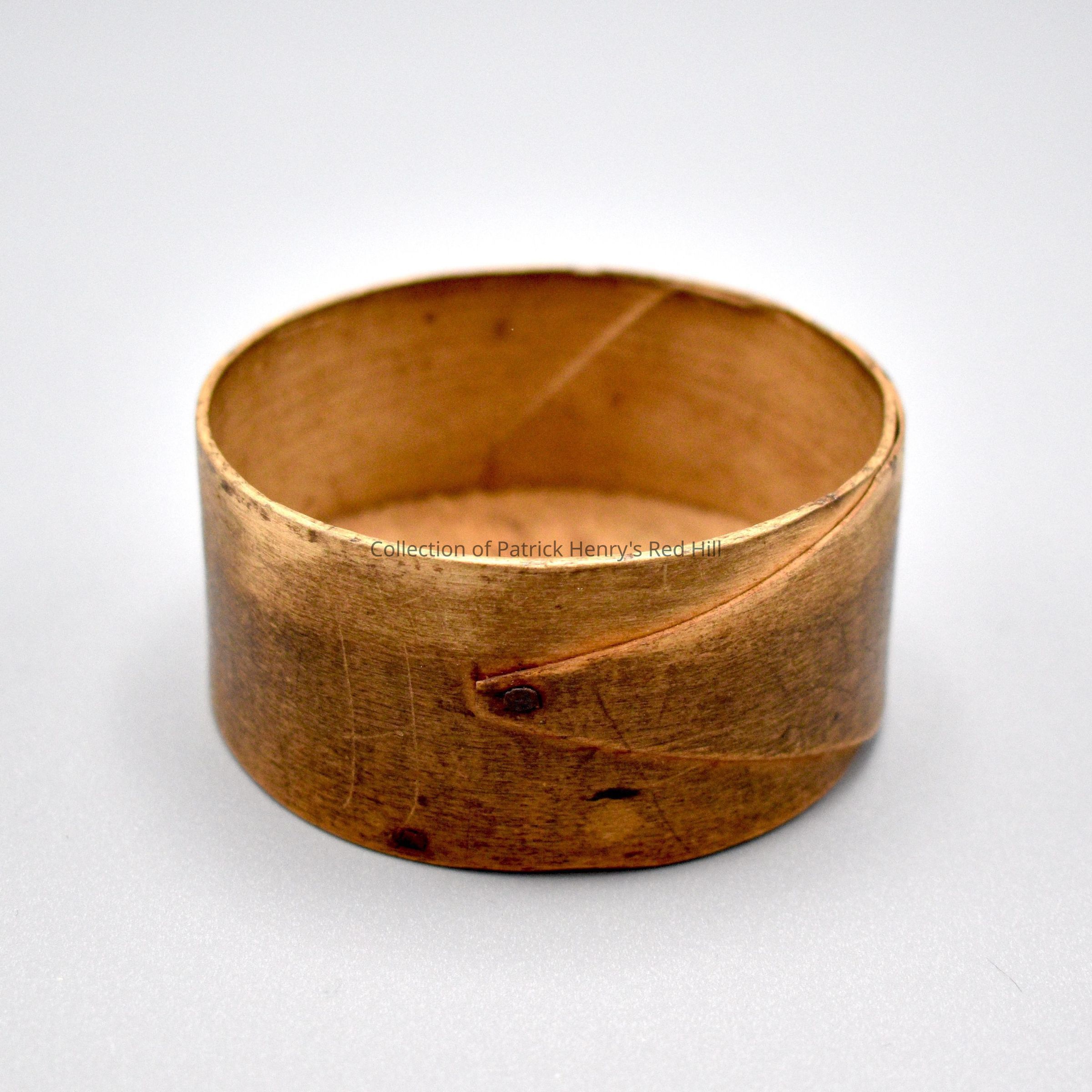Notes
This wood pillbox and lid (76.25.1b) were supposed to have belonged to Patrick Henry.
Is it said Thomas Redd of Lynchburg, Virginia acquired the box in 1875 at a Red Hill estate sale, however, no evidence of a sale at that time exists. The pill box was erroneously dated by Thomas Redd, as it was most likely created during the 1790s or later. It eventually came into the possession of Margaret Henry Ottarson (1911–1981), a second great-granddaughter of Patrick Henry by his son, Edward Winston (1794–1872).
This box is known as a Shaker Oval Box, which has a tradition reaching back nearly 400 years. They were made by hand, using a method called "bentwood", which involves wetting wood by either soaking or steaming, then bending and letting it harden into different shapes and curves using a form called a "follower". The swallowtail projections (or, as they are incorrectly referred to as "fingers" or lappers) were formed during the initial wood-cutting process using templates and fixed with iron tacks, eventually being replaced with copper ones in the nineteenth century due to rusting. They were then fixed into place with fitted bases and covers using small wooden dowels. The outsides were frequently painted with milk paints, paint made with milk casein, and tinted with earth pigments. Some varieties were fitted with handles to carry items to and from markets.
Historically, they were used to store items such as buttons and thread, dried herbs, spices, powdered paint pigments, and other small dry items. They were typically in a set of seven or eight nesting boxes; each was a size up from the last and could be stored inside one another. The Shakers began constructing these boxes for themselves, eventually making them at an industrial scale in several of their communities around 1799.
These boxes were popularized by the Shaker Community, a sect of Christianity that practiced celibacy, pacifism, communal living, egalitarianism, and confession of sin. They were called the 'Shaking Quakers' and eventually 'Shakers' by those outside the communities due to their ecstatic dancing and jerky movements during prayer, but called themselves the United Society of Believers in Christ’s Second Appearing.
"Shakerism" was founded in Manchester, England in 1747 and spread to America by Ann Lee (1736-1784) when she arrived in 1774, seeking religious freedom with eight other pilgrims. The Shaker communities formed and spread until their peak in 1840, with nineteen communities an estimate of over six thousand believers living in the United States. Believing in a perfect utopia, the Shakers strived for perfection and uniformity in everything they did, especially their craftsmanship. It was through their hands that God would be redeemed, and so their communities were very clean, efficient, and altruistic.
The Shaker population has been in decline since the American Civil War, with only one community remaining, a single village called Sabbathday Lake Shaker Village in New Gloucester, Maine. As of 2019, they have three members.
Margaret Henry Ottarson donated the box and lid to the Patrick Henry Memorial Foundation on December 5, 1957.
